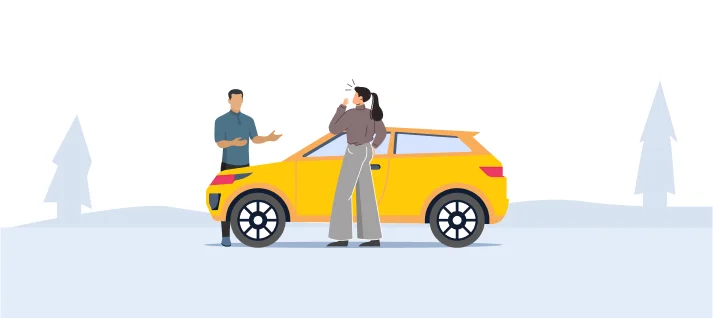What to Consider When Insuring a Classic or Vintage Car ?
Owning a classic or vintage car in India is not just about transportation—it’s about preserving a piece of history. These automobiles are often collectors’ items, evoking nostalgia and commanding admiration. But safeguarding such prized possessions requires more than a standard insurance policy. This is where classic Car Insurance and vintage Car Insurance come in.
In this blog, we explore essential Car Insurance tips, discuss regulatory distinctions, and explain how to protect your vintage treasure with the right insurance in India.

Table of Contents
Understanding the Types of Classic Cars
In India, only vintage cars are officially recognised for regulatory and insurance purposes. The Insurance Regulatory and Development Authority of India (IRDAI) acknowledges cars certified by the Vintage and Classic Car Club of India (VCCCI) as vintage vehicles. The term "classic car", although widely used by enthusiasts, has no formal definition under Indian law.
Here is a summary of what is recognised officially:
|
Category |
Manufacturing Period |
Description |
|
Vintage Cars |
Before 31 December 1940 |
Vehicles manufactured prior to 31 December 1940 and certified by the VCCCI. These cars are often showcased in exhibitions and are eligible for specific insurance discounts. |
|
Classic Cars |
1941 – 1970 |
Automobiles produced between 1941 and 1970, recognised for their historical significance and design. |
The Importance of Vintage and Classic Car Insurance
Standard insurance policies are designed for modern vehicles and may not account for the unique needs of heritage automobiles. Here’s why tailored vintage Car Insurance is crucial:
-
Agreed value coverage: Vintage cars don’t depreciate like regular cars. With agreed value, both the insurer and owner settle on a value upfront, providing clarity during claims.
-
Limited usage provisions: Most heritage vehicles are driven sparingly—for rallies or exhibitions. These policies consider limited mileage in premium calculations.
-
Special parts coverage: Repairs often require importing rare parts. Specialised insurance can cover those expenses.
-
Restoration cover: If your car is undergoing restoration, insurance can protect it even in its incomplete state.
Factors Influencing Car Insurance Premiums
When it comes to classic Car Insurance (where applicable) or vintage Car Insurance, the following elements influence premiums:
-
Certification by VCCCI: Only cars certified as vintage qualify for IRDAI-recognised discounts.
-
Condition and maintenance: Well-maintained vehicles or those with restoration documentation may attract better premiums.
-
Secure storage: Garaging your vehicle and using ARAI-approved anti-theft devices helps reduce premiums.
-
Usage limitations: Limited annual mileage may lower risk perception and premium rates.
-
Memberships: Being part of official vintage car clubs may help in obtaining better terms from insurers.
Car Insurance Tips for Vintage and Classic Cars
Here are essential Car Insurance tips to keep in mind while insuring your heritage car:
-
Obtain certification from VCCCI: This is crucial to avail recognised vintage Car Insurance benefits.
-
Maintain proper documentation: Service records, restoration bills, and historical details help during claim assessments.
-
Insist on agreed value policies: Avoid depreciation-based coverage—agreed value ensures fairness.
-
Clarify usage terms: Ensure the policy covers the intended usage—exhibitions, rallies, or occasional leisure drives.
-
Protect accessories: Include original badges, wood trims, and dashboards in the coverage if possible.
-
Consider add-ons: Opt for roadside assistance, key replacement, and accessories coverage where available.
Maintaining Your Vintage or Classic Car
Your vehicle’s upkeep significantly influences your insurance outcomes. Here's how:
-
Scheduled servicing: Even unused cars need regular maintenance to stay in insurable condition.
-
Climate-controlled storage: Prevent corrosion, fading, and damage due to humidity and pests.
-
Tyre and battery care: Avoid flat spots and battery degradation in unused vehicles.
-
Photographic records: Document your car's condition annually to avoid claim disputes.
Conclusion
Insuring a vintage car isn’t just about complying with regulations—it’s about preserving an irreplaceable legacy. A thoughtfully selected insurance policy ensures that every part, paint detail, and chrome trim is protected, whether you're displaying it at a rally or restoring it for future generations.
FAQs
1. What qualifies a car as vintage in India?
Only private vehicles certified as vintage by the VCCCI are recognised by IRDAI for special insurance benefits.
2. Is Third-Party Liability Insurance mandatory for vintage vehicles?
Yes. As per the Motor Vehicles Act, third-party insurance is compulsory for all cars, including vintage ones.
3. Can I insure a car that’s being restored?
Yes. Some insurers allow for coverage during restoration, with provisions to adjust the policy post-restoration.
4. Is agreed value the same as IDV (Insured Declared Value)?
No. Agreed value is mutually decided between the owner and insurer, unlike IDV which follows market depreciation models.
5. Can vintage Car Insurance cover spare parts and accessories?
Yes. Certain insurers provide optional coverage for rare or original parts and accessories.



 2223
2223


















